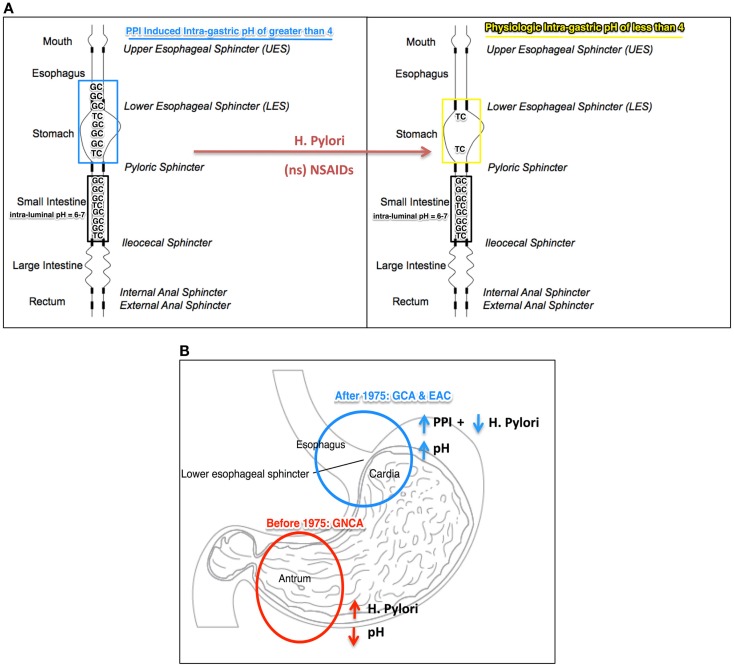Figure 1.
(A) Illustration of the “ion-trapping concept”: [intra-gastric pH (PPI induced or physiologic) = pKa (TC or GC) + log (Ionized TC or GC/Un-ionized TC or GC)] in which intra-gastric pH, PPI induced (blue) and physiological (yellow), facilitates movement of tauroconjugates (TC, pKa 2) and/or glycol-conjugates (GC, pKa 3.7) from the duodenum to the esophagus. When the intra-gastric pH is >4 (PPI induced), theoretically, 4 times more of the amount of ionized bile salts may mobilize to the esophagus. Helicobacter pylori (HP) and non-specific (ns) NSAID may increase acid secretion and shift the intra-gastric pH to lower than 4 (“safe-zone”), thereby preventing bile salt ionization. (B) Anatomical representation of the location of malignancy with high incidence rate in the United States, before and after 1975: non-cardia adenocarcinoma (GNCA), in red, before 1975 when H. pylori infection was high and PPI not in chronic use; gastric cardia adenocarcinoma (GCA) and esophageal adenocarcinoma (EAC), in blue, after 1975, with reduced incidence of H. pylori and the advent of long-term use of PPI. TG, tauroconjugate; GC, glycoconjugate.

